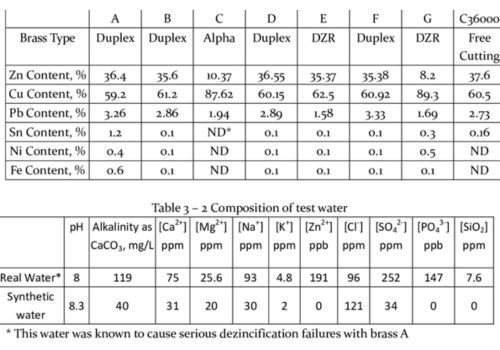Brass is a popular metal alloy you can use in many applications.
Therefore, whether you want to fabricate, cast or forge brass, it is important to know its melting point.
In this guide, we explore all fundamental aspects about the melting temperature of brass.
What is the Melting Point of Brass?
The melting point of brass will generally depend on the brass type and more specifically the proportion with which copper and zinc were mixed. Also, the types of alloying that may have been used. Usually, brass has a melting point of about 900 °C to 940 °C or 1652 to 1724 °F.

Factors Influencing the Melting Point of Brass
Below are some factors affecting the melting point of brass:
Composition
- The presence of copper tends to increase the melting point while zinc on the other hand reduces it in brass alloys.
- Alloying Elements: Usually, incorporating elements such as lead or tin decreases or increases the melting point correspondingly.
Purity of Metals
- Impurities: Defects such as impurities in copper or zinc can make the melting point to be lower than the melting point of pure metals.
Environmental Factors
- Pressure: Pressure can influence melting point but the impact is normally insignificant for brass in standard conditions.
- Atmosphere: Nature of the gas during the melting process may also determine oxidation or reactions during melting hence altering the melting point.
Microstructure
- Grain Size: The finer grains ensure a gradual melting of the area, on the other hand, large grains cause localized melting at relatively low temperatures.
- Phase Distribution: Phase ratios such as alpha and beta’s distributed in the brass vary the material’s melting point.
How Brass Melting Temperature Compare to Other Metals
Brass melting point of 900°C – 940°C (1652°F – 1724°F) in comparison to other metals:
- Copper: The melting point of brass is lower than copper where their melting point standard is 1085°C / 1984°F.
- Bronze: Brass has a relatively low melting point against bronze (950°C – 1050°C / 1742°F – 1922°F).
- Aluminum: Brass has a higher melting point than the melting points of aluminum (660. 3°C / 1220. 5°F).
- Steel: Brass has lower melting points as compared to steel (1370°C – 1510°C / 2500°F – 2750°F).
- Lead: Brass has a significantly higher melting point than that of lead at 327. 5°C / 621. 5°F.
Melting Temperature of Various Brass Grades
Below are approximate melting temperatures for popular brass grades:
| Brass Grades | Melting Temperature in °C (°F).
|
| Alpha Brass | 900°C – 940°C (1652°F – 1724°F) |
| Alpha-Beta Brass | 880°C – 950°C (1616°F – 1742°F) |
| Beta Brass | 850°C – 920°C (1562°F – 1688°F) |
| Cartridge Brass | 905°C (1661°F) |
| Naval Brass | 905°C to 920°C (1661°F to 1688°F) |
| Red Brass | 900°C (1652°F) |
| Yellow Brass | 905°C (1661°F). |
Why Understanding the Melting Point of Brass is Important
Knowledge of brass melting point is essential for various reasons:
- Manufacturing Processes: This is critical to ensuring you identify the appropriate measures to use when casting, forging and even machining the Brass parts.
- Quality Control: It helps to heat the brass alloys to the desired temperature which will not compromise on their structure and performance.
- Material Selection: Useful in guiding you on selecting the right brass alloy type that should be used in certain situations provided its thermal characteristics and its tendency to melt.
- Safety: A proper understanding helps to avoid such problems as overheating which in many cases results in material deterioration or even hazardous conditions in industries.
- Cost Efficiency: Therefore, understanding the features of brass melting contributes to the rational use of energy and resources during its processing.
How boiling and Melting points of Brass Compare
Brass usually has a low melting point of 900 to 1060°C (1652 to 1724°F) based on the composition of the mixture it belongs to, as for boiling, this occurs at 1035°C (1900°F).
Melting alters the state from solid to liquid, boiling alters the state from liquid to gas and it requires more heat to transform brass from a liquid to a gaseous state.
Applications of Brass Based on Melting Point

It’s used in the following applications:
· Electrical and Electronic Components
Electrical wiring and circuits in electrical devices like fans and refrigerators require connectors and terminals. These are made from brass because brass is an excellent conductor of electricity and has a moderate melting point.
· Plumbing and Piping
Brass also has good corrosion resistance and a much better melting point that makes it ideal for use in valves, faucets, and pipes among others.
· Decorative and Architectural Uses
Brass is well-suited to ornamental items like door and room handles, lighting fittings, musical instruments, and furniture trims mainly because of its appearance and ease of shaping.
FAQs
What happens when Brass is Melted?
When brass is molten, it changes its status from being hard and solid to being in liquid form so that it can be poured into different molds or forms.
How much Heat can Brass Handle?
Brass is resistant to heat and can reach temperatures of up to its melting point, 900°C to 940°C (1652°F to 1724°F) thus it serves as a good material for many industries.
In conclusion, brass’s melting point of 900-940°C guarantees its usage in industries where heat stability combined with malleability is necessary. With this information, you can easily fabricate brass to suit an application.




